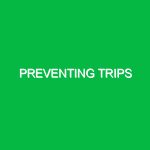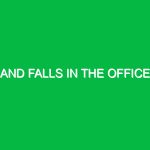Introduction to Slips
Slips are a common yet often underestimated hazard in various environments, particularly those related to health, safety, and the environment (HSE). Defined as the loss of traction that leads to a fall, slips can occur on any surface, whether at work, home, or in public spaces. The relevance of slips in HSE cannot be overstated; they account for a significant percentage of workplace injuries and can have serious implications for both individuals and organizations. Understanding the causes and consequences of slips is essential for creating safer environments and promoting a culture of safety.
I remember a time when I was working on a construction site. It had rained heavily the night before, and the ground was slick with mud. A colleague, rushing to meet a deadline, took a misstep and fell hard, resulting in a sprained ankle and several days off work. This incident highlighted not just the physical risks associated with slips, but also the ripple effect they can create, impacting productivity and morale.
In this article, we will delve into the multifaceted world of slips within the HSE domain. We will explore the potential hazards, the risks associated with slips, and the best practices to mitigate them. Furthermore, we will touch upon the regulations and standards that govern slip hazards, ensuring that readers are well-informed about the framework designed to protect them.
Identifying Hazards and Risks Associated with Slips
Understanding slips begins with recognizing the various hazards and risks that contribute to them. The potential hazards can vary significantly based on the environment and activities involved. Here are some of the most common slip-related risks:
Wet Surfaces
One of the leading causes of slips is wet surfaces. Water, oil, or any liquid spills can create dangerously slick conditions. For instance, in a kitchen setting, grease spills can lead to catastrophic slips. It’s essential for employees to be trained in promptly addressing spills and maintaining clean, dry workspaces to mitigate this risk.
Uneven Surfaces
Uneven flooring, such as cracks, holes, or raised tiles, can also pose significant slip risks. In a warehouse, for example, a small crack in the concrete floor can be easily overlooked but can lead to a serious fall. Regular inspections and maintenance of walking surfaces are critical to identify and address these hazards promptly.
Environmental Conditions
Weather can play a significant role in slip incidents. Rain, snow, and ice can create treacherous conditions outdoors. For instance, an employee tasked with clearing snow from a parking lot can easily slip and fall if proper precautions are not taken. Ensuring that walkways are cleared and treated with salt or sand during inclement weather can significantly reduce risk.
Inappropriate Footwear
Footwear can dramatically affect slip risk. Shoes with inadequate tread or those made from slippery materials can lead to falls. Workers in industries such as healthcare, construction, or food service should be required to wear appropriate slip-resistant footwear to minimize the risk.
Distractions
Distractions, whether from mobile devices or conversations with colleagues, can lead individuals to overlook hazards in their environment. For example, someone engrossed in a phone conversation might fail to notice a wet floor sign. Cultivating a culture of awareness and mindfulness at work can help reduce these risks.
Best Practices and Safety Precautions for Slips
With an understanding of the various hazards and risks associated with slips, it’s crucial to implement effective safety precautions. Here are some actionable strategies:
Regular Training and Awareness Programs
Education is a powerful tool in preventing slips. Regular training sessions can equip employees with the knowledge they need to identify hazards and understand the importance of maintaining a safe environment. For instance, a construction company I once worked with held monthly safety meetings where employees could discuss near misses and share tips on avoiding slips.
Proper Cleaning Protocols
Establishing efficient cleaning protocols is essential for minimizing slip hazards. This includes promptly addressing spills, using appropriate cleaning agents, and ensuring that floors are dried properly. In hospitals, for example, using absorbent mats in high-traffic areas can significantly reduce the risk of slips caused by wet floors.
Implementing Signage and Barrier Systems
Clear signage indicating wet floors or other hazards can alert individuals to potential slip risks. Furthermore, using barriers to cordon off areas under maintenance can prevent people from unintentionally entering hazardous spaces.
Conducting Regular Inspections
Routine inspections of the workplace can help identify and rectify slip hazards before they lead to incidents. This includes checking for uneven surfaces, ensuring that walkways are clear, and verifying that safety equipment is in place and functional.
Encouraging Safe Footwear Policies
Instituting a footwear policy that encourages or requires slip-resistant shoes can dramatically reduce slip incidents. By ensuring that employees wear appropriate footwear, organizations can help mitigate one of the most significant risks associated with slips.
Regulations and Standards Governing Slips
In the HSE domain, various regulations and standards are in place to help manage slip hazards. Understanding these can aid organizations in compliance and foster a culture of safety.
Occupational Safety and Health Administration (OSHA) Standards
In the United States, OSHA has specific regulations regarding slip hazards. For example, OSHA‘s General Duty Clause requires employers to provide a workplace free from recognized hazards, including slippery surfaces. Employers must conduct risk assessments and implement measures to control slip hazards effectively.
National Institute for Occupational Safety and Health (NIOSH)
NIOSH provides guidelines for preventing slips, trips, and falls in the workplace. Their recommendations include conducting hazard assessments, providing training, and implementing engineering controls to eliminate slip hazards.
American National Standards Institute (ANSI) Standards
ANSI outlines slip resistance testing standards that help organizations assess the safety of walking surfaces. By adhering to these standards, organizations can ensure that their environments are safer for employees and customers alike.
Conclusion
Slips are a significant concern within the Health, Safety, and Environment (HSE) domain. Their prevalence and the potential for serious injury make understanding and mitigating slip risks essential. By identifying hazards, implementing best practices, and adhering to regulations, organizations can create safer environments that protect individuals and enhance overall productivity.
As someone who has witnessed the consequences of slip incidents firsthand, I cannot emphasize enough the importance of proactive measures in preventing slips. Whether through employee training, rigorous maintenance protocols, or simply fostering a culture of safety awareness, every step taken can contribute to a safer workplace. Remember, safety is not just a policy; it’s a practice that requires ongoing commitment and vigilance.


